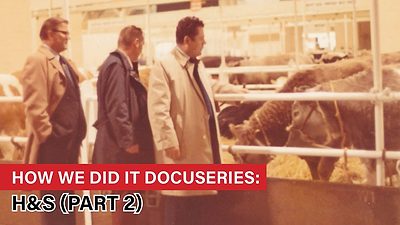For 13 years, I have worked in the ag equipment business. Along the way, I have had many mentors and trustworthy people teach me everything I know. One reoccurring theme has been differing opinions between the auction market and the retail market. Not one mentor I worked with had the same view on how these 2 markets work together.
One thought they work independently of each other — each market had no bearing on the other, but both had a place. Another thought auctions are only used by banks to liquidate repossessed assets and were a dumping ground; retail was all that mattered. Finally, there’s the school of thought that auctions had a “Canary-in-the-Cole-Mine” effect on the retail market. He thought that the trend lines in the auction markets would eventually manifest themselves in the retail markets. My mentor explained that when the percentage of difference got too far in one direction, a correction would take place; sometimes good and sometimes bad.
I started tracking auction values around the second year I worked in this business. It makes me feel old to say this, but, I still had to look through publications to find auction values. During this time, I think there were about 3-5 websites that posted consistent, reliable auction values. Wow, how that has changed!
I would gather values on a spreadsheet and watch month-over-month how the trend lines would change. After about 2 months of change, up or down, I would compare auction data to retail sold data from my business system. I would look for similar margin trend lines for related equipment. If the trend lines were the same, then an adjustment would be made.
What I have found by doing this is, the lag time between auction values and retail margin value is 2-3 months, roughly a quarter. Once the auction market starts to trend up or down, the industry takes 6-12 months to make changes. This lag time has a ripple effect throughout already priced used equipment inventory. The decision to reprice, auction or generate some “hotlist” is a tough decision to make. Not only do they cost substantial amounts of money, they reset the marketplace. An argument I hear is if the prices stay high, then that is the market. In a vacuum that would be a fair statement but, outside factors makes this impossible.
The best example I can point to is 2013-15. So many things came to a head at once. Commodity prices fell and, in turn, so did on farm income. During this time, record levels of new equipment were sold. Equipment dealerships were flush with late-model and low hour equipment, and it didn’t take long for the first dealer group to collapse under the pressure. Subsequently, dealer auction sale bills began to cover desks and fill email inboxes. A new trend was developing. Auction after the auction took place. Billions of dollars of inventory were sold 40-50% on the dollar, but, the retail price was slow to change. At one point, the combine average auction value was $100,000 less than the average advertised retail price.
In my opinion, this did more to fuel buyers at an auction than anything the economy did. If the retail prices had been within 15-25% of auction value, more buyers would have bought from dealer groups. The dealership value statement would have captured more dollars. Between interest rate buy downs, extended warranties and just the dealership standing behind its product, it would have gone a long way. The buyers could afford to take a chance on the “quality” of a machine. Between 2013 and 2015, the idea of only “Junk Equipment” was sold at auction went out the window. Some very nice and well reconditioned equipment sold across the auction block.
Looking back on what I could have done better, I should have trusted the data. I looked at data and talked to people all over the U.S. and Canada, and the conversation always ended the same way. If it looks like a duck, walks like a duck, it’s probably a duck. Pulling the lever sooner would have made a more significant impact, and the recovery process would have started sooner. In a down economy, not trusting what I knew to be accurate, I passed on some real opportunities to make money. There were deals to be had that would have more than offset the losses from selling old inventory. As the old saying goes, hindsight is 20/20. I hope the moves I make next time, and there will be a next time, are the right ones. I see this history as it is repeating itself.
Farm Equipment‘s Ask the Expert: Used Equipment series is brought to you by Iron Solutions.
At Iron Solutions, we provide used equipment valuations, market intelligence and a suite of integrated, cloud-based business systems custom-tailored for the equipment industry. Our proprietary model is built on actual dealer sales transaction data. Learn more…







